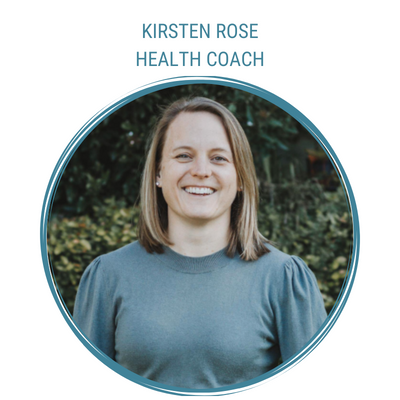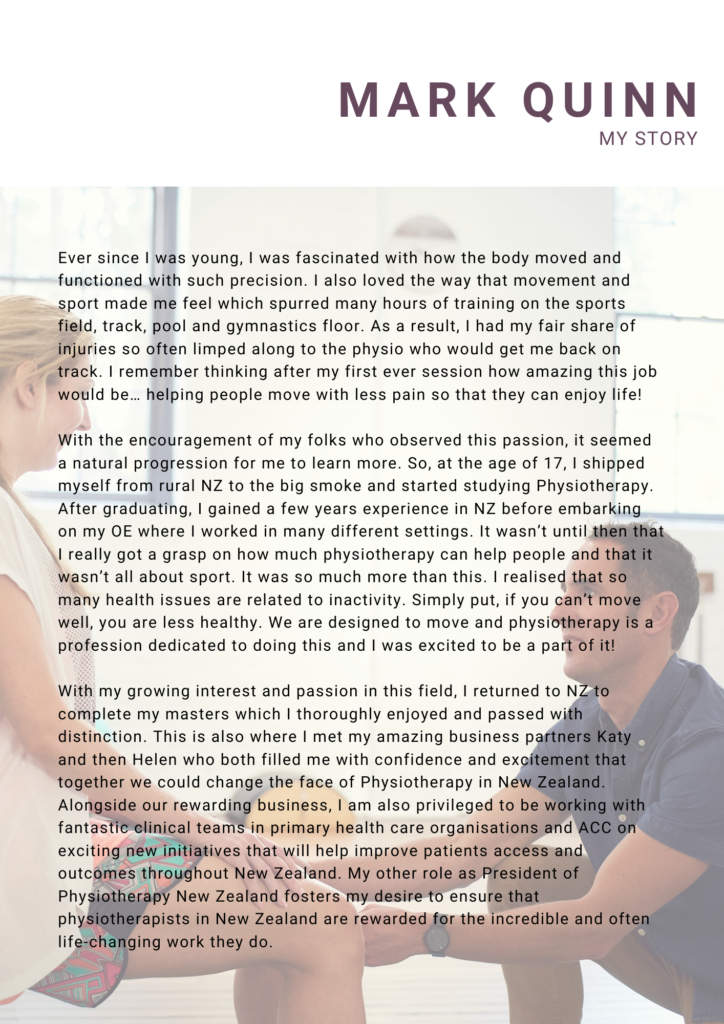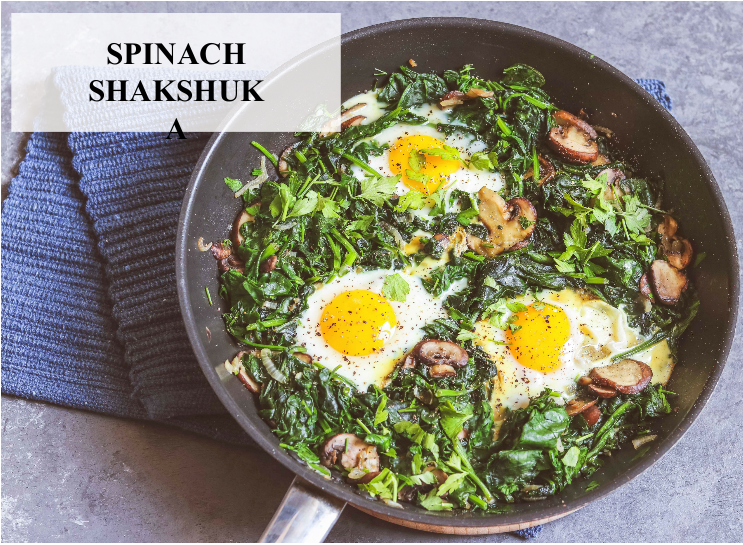It’s Just a Headache
Written by Robyn Atkinson
Headache is considered one of the most common disorders globally, however most headache sufferers do not seek treatment. Instead, they rely on over the counter medication to ease their pain - sometimes for many years without end. Unfortunately pain medication only masks the pain, with the underlying cause ready to trigger the head pain again. This merry-go-round of numbing the pain with pills is a widely accepted solution for headache pain…but should it be?
Think of pain as your body’s way of telling you that something isn’t right. Whether it’s repeated headache attacks, constant daily headaches or migraine, taking the time to investigate the cause of your headache can save you from future pain (and pills). Pain medication can be a quick and easy solution, but without addressing the root cause of the pain - your headache is likely to always return. Not to mention, most pain medication can exacerbate your headaches over the long-term (also known as medication overuse headache).
Headaches are classified as either primary or secondary. Primary headaches, such as migraine and tension-type headache have no known cause. Headaches from a known cause such as neck dysfunction or from pain medication overuse are classified as secondary headaches. With approximately 300 different types of headache however, it may be difficult to decide where to start looking for non-pharmaceutical relief. Luckily, there is a common feature between most headache types:
a sensitised trigemino-cervical nucleus (TCN)
- also known as the lower brainstem.
The lower brainstem extends into the spinal canal (down to the 3rd bone of the spine). Joint or muscle dysfunction in those top 3 levels of the neck will sensitise the TCN/lower brain stem causing pain to refer into the head, giving you a headache or migraine. Over time, sensitisation of the lower brain stem can lower the body’s threshold to hormones, stress, fatigue, wine, cheese etc. giving these factors the potential to cause a headache. But these triggers may not be the cause of your headache - your sensitised brainstem likely is!
Fortunately, physiotherapy can help headache sufferers. I, Robyn Atkinson, have been trained in the Watson HeadacheⓇ Approach. This method is an internationally renowned and researched method of examination and treatment for headaches. Its’ accuracy is unparalleled: specific tests can confirm upper neck disorders responsible for headache and migraine and isolate the specific joint/structure involved. The Watson HeadacheⓇ Approach utilises small amplitude techniques (no cracking or manipulation) to confirm involvement of the neck through reproduction and resolution of your usual head pain.
This targeted and gentle treatment to the upper neck, reduces sensitisation of the lower brainstem, leading to long-term resolution of your headaches, ability to return to what you love to do (and eat and drink!) without getting a headache or migraine. No more pills, no more avoiding the things that you love.
How do I know if my headache is coming from my neck or a sensitised brainstem?
Your headache may be caused by neck dysfunction if you experience any of the following:
Still not sure if the root of the problem could be within your TCN/brainstem? Consider these 4 headache myths:
Actually, you do not need to have neck pain in order to have a headache that is caused by neck dysfunction. Impairments in the neck joints, muscles or discs can sensitise the TCN/brainstem causing headache without causing neck pain. The best way to determine if your headache is coming from your neck is to receive a physiotherapy assessment. Your physiotherapist will confirm involvement of your neck through reproduction of your headache followed by alleviation of the pain by sustained pressure over the structures in the upper neck. Reproduction of pain followed by amelioration indicates neck dysfunction and an underlying sensitised TCN.
Associated symptoms such as nausea and dizziness have been found to improve with hands-on therapy in cases where the sensitised brainstem is responsible for triggering those symptoms. Furthermore, it is common for headaches to present with an overlap of headache type symptoms (i.e. migrainous and tension-type). Determining underlying neck dysfunction, regardless of the predominant headache classification or diagnosis, is crucial in the effective management of your headache.
Many headache sufferers that I see have been suffering from headaches for a decade or more. They may get them everyday or a couple times a month. Eventually, when they decide enough is enough - they seek help. Medicating for a headache seems harmless at the time, but how long would you be willing to employ this strategy? It is curious how pills have become synonymous with headache management (several different commercials come immediately to mind for me). We wouldn’t be satisfied with long-term pain relief for an injured ankle, but covering up headache symptoms has somehow become status quo. Is it possible that we have been conditioned to accept headache pain, when similar pain in other parts of the body would trigger us to find the cause rather than a temporary band-aid solution?
Relief from strategies such as massage, may only be part of the solution. If the headaches keep coming back, chances are the root cause has not been addressed. With the potential for multiple contributing factors, headache management should be individualised. In addition to hands-on therapy for the neck, physiotherapy can also provide relief from head pain through postural correction; advice on positioning when asleep or at your desk; strengthening exercises for the neck and shoulders; and self-management pain relieving strategies.
Should I consider other causes before booking a physiotherapy appointment?
You may consider seeing your optometrist if you haven’t had your vision checked recently or believe your headaches may be due to eye strain. On a more serious note, a very small percentage of headaches will have a more sinister cause that requires emergency care: if your headache is severe or came on suddenly without cause (within seconds), has been worsening or is unlike any other headache you’ve ever experienced - seek medical attention. If you’re not sure however, your physiotherapist will be able to guide you in the appropriate management of your head pain.
Effective treatment is available for the following headache types through The Headache Clinic:
To enquire or book an appointment, please call our friendly reception team on (09) 366 4480 and ask about The Headache Clinic or book online HERE.
Movement Therapy by Mira Boeyens
Should I be doing yoga or pilates, is one superior over the other… and what is actually the difference between the two?
Firstly, both yoga and pilates is for everyone, from complete beginners to advanced gurus. However, there are some differences that’s noteworthy, especially if you are recovering from an injury.
Pilates is powerful as it caters to all levels, including those after injury/surgery. Pilates is often my “go to” when reintroducing exercise/starting rehabilitation after injury. The benefit with pilates, is that you can more easily focus on activating, recruiting and strengthening specific localised muscles.
You can perform certain exercises on the equipment available, such as the reformer, which you otherwise would not have been able to do without it. The equipment allows us to start with exercises, activating and recruiting the correct muscles- without pain, that would not have been possible otherwise.
As you progress, you strengthen and heal, your programme is progressively advanced to challenge you, molding you into a fitter, stronger version of yourself that will support a body that is less likely to reinjure.
You can think of yoga as an exercise for both your mind and body. It will challenge your mind-body connection, flexibility, strength and balance through a specifically designed class, where postures/exercises are sequenced to flow together at varying tempo’s.
Some classes are slow, involving sustained stretches to improve muscle length and postural imbalances, while other classes flow through a variety of movements that challenge balance, strength and endurance.
Yoga focuses on the entire body; deep body strengthening and conditioning, stretching, mind and breath work. Which is incorporated through the classes to calm the mind and find a deeper awareness and connection with your body and movement.
Yoga may not be ideal if you have an acute injury where pain levels are above 4/10. If you are a client at Auckland Physiotherapy, where Mira leads the yoga class, that can be accommodated with her supervision, but it is definitely not recommended in a generic class outside of Auckland Physiotherapy.
An initial one on one consultation with one of our physiotherapists is required prior to enrolling into classes, this is vitally important. During this appointment, a comprehensive assessment is completed, which includes assessing and recording any muscle imbalances/weaknesses, problematic and painful areas. Based on this information, we can guide you and advise which would be the best movement therapy to start with.
We will establish your goals, and plan an evidence based treatment plan to achieve them!

Book an appointment with Mira HERE
In line with this month's recipe, I want to give an important mention to optimising our protein intake. Much of our body is made of proteins, especially bones and muscles so when we're recovering from an injury I think this is one of the key nutrition changes we can make. The majority of people eat well below the minimum daily recommended amount of protein (0.8g per kg of your bodyweight). This amount really only covers our usual cell turnover, it doesn't allow us to cope with extra repair needs, building muscle mass or coping with the depletion of daily stress. Ideally we want to eat around 1.5g of protein per kilogram of bodyweight per day. Yes, when you do the maths for yourself it will seem like a lot, trust me it's worth it! Ideally you'll break that into blocks of 30g at a time from plant and/or animal sources. A highly quality protein supplement can be a good addition too. If you'd like to read more about this and calculate your own ideal intake then I'd recommend this website https://examine.com/guides/protein-intake/ or book in for a complimentary health coaching call and I'll walk you through what suits your lifestyle and goals.

Book a Health Coaching appointment HERE
Omelette wraps; serves 4, prep 15 mins, cook 10 mins
Ingredients;
200g cottage cheese
4 handfuls watercress
1 lemon, peel only
6 eggs
¼ cup milk (dairy or
plant-based)
1 tsp mixed herbs
4 tsp coconut oil
100g smoked salmon,
chopped
Method;
Place the cottage cheese, watercress and lemon peel in a high bowl
and puree with the hand blender (or food processor) until smooth
paste forms.
Beat the eggs with the milk and herbs in a separate bowl.
Heat 1 tsp of oil in the medium size frying pan and fry 1/4 of the
egg over medium heat for 2 minutes until the egg solidifies, then
turn around. Bake the other side for ½ minute.
Remove the omelette from the pan and set aside. Fry the other
omelettes with the rest of the oil.
To serve, spread the cottage cheese paste over the omelettes and
top with smoked salmon. Roll up the omelette as a wrap and cut in
half.
Makes: 7 cups
Prep: 20 mins
Cook: 2 hrs
What you need;
1 cup (165g) pineapple,
cubed
5 Medjool dates, pitted and
roughly chopped
Orange, 2 tbsp. juice
1 tbsp. vanilla extract
1 tsp. ground cinnamon
¼ cup (60ml) coconut oil,
melted
3 cups (400g) almonds,
roughly chopped
1 cup (150g) cashew nuts,
roughly chopped
3 cups (90g) unsweetened
coconut flakes
½ cup (70g) sunflower seeds
½ tsp. salt
What you need to do;
Pre-heat oven to 250F (120C) and prepare 2 racks lined with baking
sheets.
In a food processor or high-speed blender, add the pineapple, dates,
orange juice, vanilla extract and cinnamon. Blend until smooth. Next
add in the coconut oil and blend again. Set aside until required.
Chop up the almonds and cashew nuts and transfer into a large bowl.
Add the coconut flakes, sunflower seeds, salt and mix well.
Fold in the pineapple mix into the nuts and mix well until combined.
Divide the wet granola between the two earlier prepared baking sheets
and spread into a thin layer.
Place into the oven and bake for around 2 hours. Give the granola a
mix every 20 mins and rotate the trays after 60 mins of baking.
In the last 30 mins keep a close eye on the granola to prevent burning.
Finish baking as granola turns golden brown. Cool to room
temperature and transfer into airtight containers.
The granola will keep for a couple of weeks.
Calf muscle strains are one of the most common lower limb muscle injuries in addition to hamstring and groin strains. They occur commonly in sports which involve high-speed running or high volumes of running and acceleration and deceleration forces, although they can also occur in the general population with less intense activity. It is unsurprising that the calf gets injured when you consider 3-6 times your bodyweight goes through it when you run! The classic presentation will be a sudden feeling of pain like someone hitting them in the back of the lower leg, sometimes associated with an audible noise.
Like all acute soft tissue injuries there will be a subsequent inflammatory reaction to start the healing process, which may last up to approximately 12 weeks, without any complications. These injuries are graded from 1-3, with 1 indicating that less muscle fibres have been damaged and 3 meaning significantly more muscle fibres and fascia (connective tissue) have been damaged during the injury. This will have direct implications for your prognosis and how long you should expect the injury to resolve and have to go back doing all your normal activities and sports.
Treatment will involve an initial period of rest, and reduced activity whilst your body repairs, and then a graded increase in load on the muscle over months as the healing continues to achieve full function. A recent systematic review identified the main risk factors for a calf injury being increasing age and previous calf injury. This makes sense, as a process called sarcopenia reduces muscle mass as we age and therefore strength and force output of our muscles. In addition to this if a previous muscle injury is not rehabilitated optimally there may be remaining strength deficits, which could be responsible for further injury once the person attempts to get back to their full activities as the calf cannot cope with the forces applied to the muscle.
Anecdotally from personal experience people often feel fine to go back to the sports field when they can walk normally without a limp. The trouble is the forces required to run, jump, walk uphill and sprint are significantly more than required to walk. Therefore, patients often come back in after re-injuring the calf on return to activity. To safely return to normal activities and sports the strength needs to be approximately the same as the other side. Also, strength is only one part of the rehab. Once the strength is optimal we need to work on power, the ability of the calf to produce force quickly, which is what's needed in explosive sports. Hence what seems like a “simple” calf injury will need to be screened fully by a physiotherapist and given the sign off to return to sports to reduce the risk of recurrence.
So if you’re suffering from a new or recurrent calf injury, or any other muscle strain, book an appointment to see one of our physiotherapists to get you back doing what you enjoy.



The new year often brings optimism and motivation to do things differently. Many of us are keen to set big goals and kickstart our health. I have 2 favourite quotes that I always find useful at this time of year. The first is by James Clear, author of Atomic Habits (which is an excellent read when it comes to making changes to your health and lifestyle), he says "You don't rise to the level of your goals, you fall to the level of your systems". The takeaway for me is that the goal is not the key to our success, the magic is in creating habits that actually work. It's the small, repeated actions we take and how well we maintain them that matter the most.
Which brings me to my next favourite by Charlie Munger who says "Take a simple idea and take it seriously". No one likes a complex system, it's too hard to maintain. Living a healthy lifestyle isn't rocket science, the simple things work. What is hard is the mindset and patience to keep doing those simple things. So when you're deciding on the changes you want to make to your health this year, try to choose an action that is really simple, something you almost can't fail at. Whilst in the beginning it's likely this won't feel like "enough", trust me, consistency wins over intensity everytime!
If you've got some health goals for the year and want some guidance on fine tuning your systems then book in for our 30 minute complimentary health coaching call. I'd love to get you off to a great start in 2023.
SPINACH SHAKSHUKA

WHAT YOU NEED;
1 tbsp. coconut oil
1 large onion, chopped
2 garlic cloves, crushed
4 cups (300g) mushrooms,
sliced
2 cups (450g) leaf spinach
4 eggs
handful parsley, chopped
WHAT YOU NEED TO DO;
Heat the oil in a large pan over medium heat. Add the onion and
garlic and cook for 2-3 minutes until soft. Next, add the
mushrooms and cook for another 3-4 minutes. Season with salt
& pepper.
Now start adding the spinach to the pan, you will likely have to
do this in batches. Cover the pan with a lid and let it wilt, repeat
this step until all the spinach is in the pan. Stir well and taste for
seasoning.
Make 4 indentations (‘wells’) in the spinach and break an egg in
each. Cook for 5-6 minutes covered with a lid until egg whites
are set.
Dress in fresh parsley and serve.
A Healthy festive option for Christmas
Pav is back on the menu thanks to this quick and simple, fail-proof low-carb recipe.
Decorate your low-carb pavlova with whipped cream (sweetened with your choice of LCHF sweetener if you like), seasonal berries and fresh mint. Or if you’re feeling creative, bake and decorate mini individual pavlovas so you don’t have to share. Delish!
Ingredients;
6 egg whites
1⁄2 teaspoon of cream of tartar (meringue stabiliser)
1⁄3 cup of Natvia granules
1 cup whipping cream (unsweetened)
1 teaspoon vanilla extract 1⁄2 cup
(75g) fresh strawberries, chopped 1⁄2 cup
(75g) fresh blueberries
Handful of fresh mint leaves
Method;
Pre-heat oven to between 120o–150oC.
Whisk the 6 egg whites until thick and frothy, then mix in the 1⁄2 teaspoon of cream of tartar – this is a meringue stabiliser, so it is important not to forget this.
Once stiff peaks have formed (this means that when the beaters are lifted from the mix, the peaks stands straight up), add 1⁄3 cup of Natvia granules slowly to the egg whites while the mixer is on. Allow the eggs to continue whipping until white, shiny and glossy.
Once mix looks nice and glossy, turn mixer off and rub a little of the mix between your fingers. If it’s silky smooth, it’s whipped enough. If you can feel any grain or granules, keep whipping! When ready, dot a little of the mix on baking paper to stick to your baking pan to help keep the paper in place on the tray. Spoon mix out onto baking tray and arrange however you like – the mixture should yield one 20cm round, or you can spoon individually onto the tray for mini pavlovas instead.
Bake at 120o–150oC for 1.5 hours for a large pavlova. It will brown a little. After 1.5 hours, turn the oven off and allow the pavlova to remain in the oven for another hour to dry out (or, if you have time, overnight!).
By Anna Geraets, Pelvic Health Physio
There is this muscle we have that we typically don’t think about, until there is a problem (leaking, pain), or we’re considering vaginal childbirth.
So, first, what is this elusive muscle?
To make things as simple as possible, our pelvic floor has 2 layers. The superficial layer (closer to the surface), and the deep layer. They work together but also serve different functions.
Levator Ani, aka “Levators”: This is our deeper layer. It’s main action is to lift and lower. It is like a hammock that sits at the base of our perineum and works to support our pelvic floor organs. It is very important for placing pressure on the urethra during straining (cough, sneeze, lifting) to keep us continent.
Bulbocavernosus/Bulbospongiosus, aka “Bulbo”: This is the more superficial layer and has circular fibres which work in a similar way to pursing our lips. It is typically the muscle that receives the most stretch during vaginal deliveries, and typically the muscle that causes a sensation of blocking for women who experience vaginismus.
Both of these layers are important, and when you are doing “kegals” ideally you can identify both the squeeze (bulbo) and the lift (levators).
However, that doesn’t answer the question of this blog.
Kegals. AKA pelvic floor exercises. I think it’s important that every woman is able to identify their pelvic floor muscle and choose to activate and relax them at will. This coordination is important in order to use the pelvic floor to support the pelvic organs during a cough, sneeze, and activity. It is just as important that they relax when we are voiding, opening bowels, delivering a baby, or achieving penetration (such as using a moon cup, tampon, or intercourse).
Sometimes the pelvic floor is weak and needs to be stronger. These women may experience leaking.
Sometimes the pelvic floor is “hypertonic”, where it has become short and tight. These women may experience leaking.
See the difference?
Pelvic floor exercises will address a weak pelvic floor. It may not, however, address your leaking. To do this you need to have a specific diagnosis as to WHY you are leaking. Your pelvic floor muscles may be too weak to put pressure on the urethra to keep you continent (the urethra is the hose where urine leaves the body). Or, they may be compensating for an overactive bladder that is sporadically squeezing so hard that urine starts coming down the urethra, and the pelvic floor is working overtime to keep the urethra closed.
So, I encourage all women to learn where their pelvic floor is and how to turn it on and off. However; if you have leaking, and you have been doing pelvic floor exercises effectively and are still leaking, perhaps strength isn’t the problem.
A pelvic and womens health physio will help to teach pelvic floor exercises, check you are doing them correctly, and provide strengthening programs for weak pelvic floors. However, pelvic floor exercises are but one tool in a very extensive tool kit that we have to help women with pelvic floor dysfunction. Before we open the tool box, we need to get a good diagnosis so our treatment can be effective and relevant to your presenting concerns.
Leaking? See a pelvic health physio so you can address this effectively today.
ACC now covers birth injuries. Call us today to see if you are entitled to subsidised care under ACC.
Book an appointment HERE OR complimentary call with a Pelvic Physio HERE
Sports massage is a term often discussed and often comes with some misconceptions. It is not just for athletes but is for anyone who is active to any degree. It is often referred to as being painful, but this is not necessarily the case. So, the following are some answers to four common questions about sports massage.
What is sports massage?
Sports massage is the use of a range of massage techniques applied to your muscles that are used in a specific sport or activity. Whether you are training for a specific event, regularly exercising or getting back into an activity a focused sports massage can be of benefit. For those of you training for a specific event, or series of events, a sports massage will take into account the phases of your training whether you are in preparation, pre-competition, competition or transition. The sports massage would be modified to suit each phase.
Isn’t sports massage really painful?
This is a misconception and a sports massage does not have to be really painful. If you have muscular tension or a previous injury that restricts movement there may be an element of discomfort – this is however, entirely within your control as your feedback to the massage therapist should always determine the depth and intensity of any massage, sports included.
Why is sports massage good for me?
There are a range of reported benefits from receiving a sports massage and these include:
- May improve flexibility and joint range of motion
- May decrease muscular and fascial tension
- May improve recovery times
- May assist with injury prevention and rehab
- May help to alleviate stress from everyday life to enable better rest and allow for more focused training.
How often should I get a Sports massage?
There are a lot of variables to consider including your budget, your phase of training, if you are experiencing muscular issues during your training, if you are more injury prone, and even how massage normally affects you and what benefits you gain from it short and long term.
If you have not included sports massage in your training programme before than starting a series of massage in the preparation phase would be best – you can then assess how you feel post massage, what worked, what you might like to modify with massage and how often you would benefit in relation to your training.
Auckland Physiotherapy offers massage packages and you can purchase these to assist with your sports massage scheduling – and save some money as well.
With the marathon season upon us, the change in seasons that brings a change in sporting events and codes, and just generally being more active as we come out of winter, now is the time to book in a sports massage.